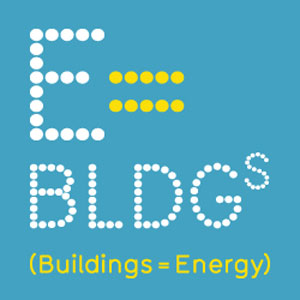by: admin
Event: Buildings=Energy: Design for a Change Symposium
Location: Center for Architecture, 11.05.11
Keynote: Stephen Selkowitz — Building Technologies Department Head, Lawrence Berkeley National Laboratory
Speakers: Colin Cathcart, AIA — Partner, Kiss+Cathcart; Rebecca Craft — Director of Energy Efficiency Programs, Con Edison; Michael Colgrove — Director of New York Office, New York State Energy Research and Development Authority (NYSERDA); Kevin Kampschroer — Director of the Office of Federal High-Performance Green Buildings, U.S. General Services Administration; Tiffany Broyles, LEED AP — Associate Principal, Environmental Specialist, Kohn Pedersen Fox; Dr. Jane L. Snowdon — Senior Manager, Industry Solutions and Emerging, Business Energy & Environment: Smarter Building Research, IBM T. J. Watson Research Center; Mustafa Abadan, FAIA — Design Partner, Skidmore Owings & Merrill; Mahadev Raman — Principal, Arup; Zachary Tofias — Climate Positive Development Program Manager, Clinton Climate Initiative
Moderator/ Introduction: William J. Worthen, AIA, LEED AP — Director, Resource Architect for Sustainability, AIA
Welcome: Margaret O’Donoghue Castillo, AIA, LEED AP — 2011 AIANY President
Organizers: AIANY in collaboration with the Center for Architecture Foundation
Sponsors: Underwriters: Arup; Con Edison; Perkins + Will; Lead Sponsors: Buro Happold; STUDIOS Architecture; 3M Window Films; Energy Products Distribution/3M Company/APG Sponsors: MechoShade Systems; Robert Silman Associates; Trespa; Supporters: Acheson Doyle Partners Architects; DeLaCour Family Foundation; Ibex Construction; KPF; Syska Hennessy Group; Friends: 1100 Architect; Bleecker Area Merchants & Residents Association; Brenda Levin; Capsys Corporation; Community Environmental Center; Helpern Architects; Hugo S. Subotovsky AIA Architects; Levien & Company; New York Building Congress; Oppenheimer Brady Vogelstein; P.W. Grosser Consulting; Swanke Hayden Connell Architects; Viridian Energy & Environmental
The proportion of energy consumption attributable to buildings in NYC reaches 95%, noted 2011 AIANY President Margaret Castillo, AIA, LEED AP. “It isn’t just big corporations that pollute; architects do, too,” she said. Less widely recognized is the array of design and operational strategies that make carbon-neutral and net-zero-energy buildings achievable goals. Some are grounded in technologies, standards, and codes; some require social engineering on various scales, from restructuring interdisciplinary collaborations to training contractors and occupants in energy-conserving best practices. They’re all essential if the U.S. is to transform itself from a global laggard to a leader in mitigating and remediating environmental damage.
The watchwords include performance, measurement, and building science, suggested Moderator and AIA Director and Resource Architect for Sustainability William Worthen, AIA, LEED AP, who recommended abandoning the language of greenness and sustainability, and instead emphasizing “high performance” and “best value” in communications with developers and other partners. Despite setbacks — e.g., the Commercial Buildings Energy Consumption Survey (CBECS), the basis for the Architecture 2030 Challenge, which fell victim to congressional budget cuts last summer — Worthen described efforts by AIA National, the Department of Energy, and others to develop and disseminate robust benchmarks for a broad range of building types as a critical step toward making high performance the norm rather than an exception.
Net zero is the right goal, observed Keynote Speaker Stephen Selkowitz of Lawrence Berkeley National Laboratory’s Building Technology Department, and verifiable operating numbers for buildings’ energy use are essential. “We know conceptually what we need to do, basically,” he said, but the real challenge is scaling up efficiency gains from the single-building scale to the societal level, combining the deep but narrow savings seen in a few hundred net-zero buildings nationwide. Improvements in the 10-20% range are possible with checklist approaches; reaching goals of 60-80% requires a detailed knowledge of sites and climates, building-information-management tools, specific metrics, and a willingness by architects to enter other elements of buildings’ life cycle: construction, commissioning, occupancy, operations, and renovation/decommissioning. Selkowitz cited sharp gains in refrigerator efficiency after the mid-1970s oil shock as evidence that policy changes and standards can drive measurable change. What we did with fridges (even while making them larger) we now need to do with buildings, and with the complex relationships modeled by instruments like the forthcoming Simergy open-platform interface for EnergyPlus.
Case studies and organizational perspectives presented on the local, national, and international panels evinced progress on multiple fronts, from one-off innovations to an inside look at Con Edison’s “peak shaving” and demand-forecasting strategies by Energy-efficiency Director Rebecca Craft. SOM’s Mustafa Abadan, FAIA, offered a range of design models from nature and nonindustrial cultures as inspiration for the Burj Khalifa, Seoul’s DMC Landmark Tower, and other advanced skyscrapers. Among the KPF works presented by Tiffany Broyles, LEED AP, the Centra at Metropark in Iselin, NJ, stood out as a radical retrofit that turned an unloved suburban commercial building to a bold icon, notable for its asymmetric trusses and daylight-harvesting excavation — a visible argument that performance and design can coexist. Arup’s Mahadev Raman put the hazards of trend prediction into historical perspective while conjecturing that the future will call for expanded uses of the ground, intelligent transportation, “smart skins,” and better use of the developing world’s “low-tech but high-performance” local knowledge.
Colin Cathcart, AIA, spotlighted Kiss + Cathcart’s projects from the Coney Island train station’s photovoltaic roof to a Lower East Side multi-family residence providing ample onsite parking — for bikes. NYC residents have one-third the per capita carbon footprint found in the rest of the nation, he noted, but on the broader 12,000-square-mile metropolitan level, we’re “no better than anybody else in the country, and internationally we stink.” Still, even if our environmental self-regard isn’t always justifiable, the city’s wealth, density, and forms of cognitive/cultural capital make it a pivotal test bed for the urbanist adjustments the future requires: “Our first, last, best hope to turn this planet around is right here in NYC.”
Bill Millard is a freelance writer and editor whose work has appeared in OCULUS, Icon, Content, The Architect’s Newspaper, and other publications.










